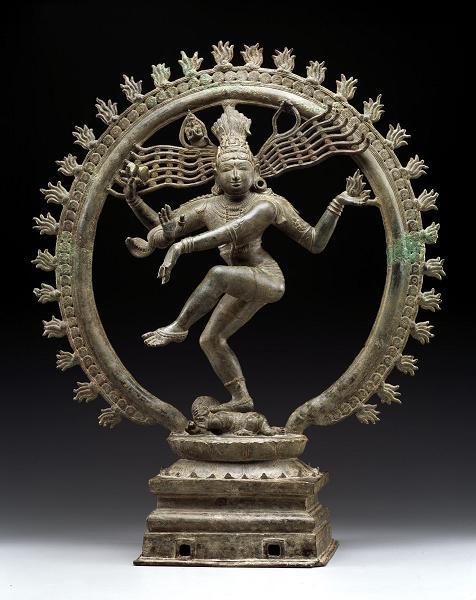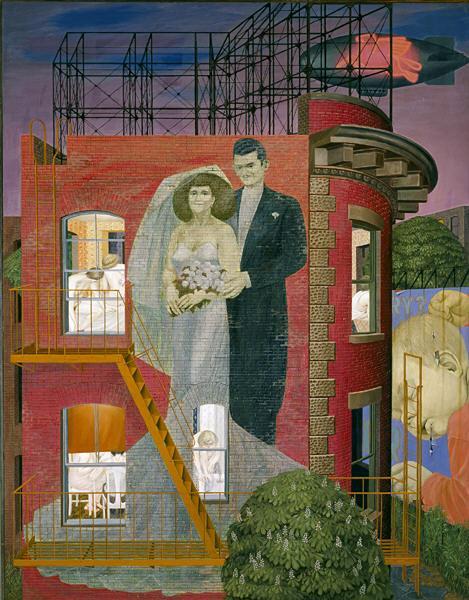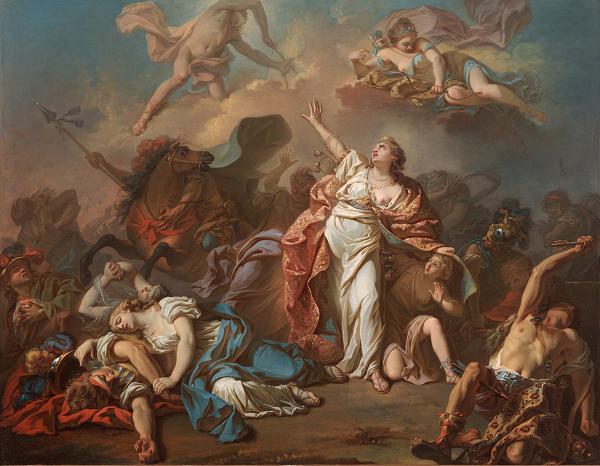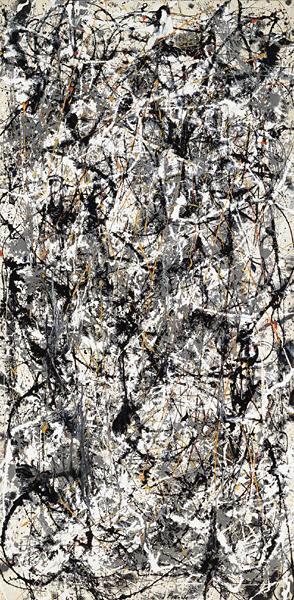If you’re a follower of the DMA Educator Blog, then you’ve read about our Staff Reading Group. Last Friday, our reading group combined a work of fiction with works from the collection in an engaging and provocative conversation.
Melissa selected five excerpts from Einstein’s Dreams by Alan Lightman.* The novel imagines what Einstein may have been dreaming about during the time that he was developing the theory of relativity. Our instructions from Melissa were simple: read the excerpts, each of which offers a definition of time, and select one work of art from the collection to illustrate that definition. This idea was first introduced by Amy in a blog post over the summer.
Six staff members participated in the conversation, and we were shocked when we learned that we had each responded to the same excerpt: 14 April 1905. In this chapter, time is defined in the following way: “Suppose time is a circle, bending back on itself. The world repeats itself, precisely, endlessly” (Lightman, 6).
Both Hannah and Melissa selected Shiva Nataraja as the art equivalent of time as a circle. Shiva is the Hindu deity of creation, destruction, and rebirth, and in this sculpture he dances out the rhythm of the universe.

Shiva Nataraja, India, 11th century, Dallas Museum of Art, gift of Mrs. Eugene McDermott, the Hamon Charitable Foundation, and an anonymous donor in honor of David T. Owsley, with additional funding from The Cecil and Ida Green Foundation and the Cecil and Ida Green Acquisition Fund
Our part-time intern, Mary Nangah, thought Jackson Pollock’s Cathedral best represented this concept of time. It’s difficult to identify and starting and ending point for each line. Time is also represented through the repetition of color and line on the canvas.
Jessica selected Harry Koerner’s June Night, which shows an intimate view of an apartment complex. Jessica felt that these vignettes could happen any time, anywhere. The images of the bride and groom, as well as the baby, also reminded her of the cycle of life. The final line of this excerpt reads “For in each town, late at night, the vacant streets and balconies fill up with their moans” (Lightman, 9). Jessica could imagine hearing sorrowful moans on the fire escape of this painting.

Henry Koerner, June Night, 1948-1949, Dallas Museum of Art, Foundation for the Arts Collection, gift of Joshua L. Logan
My selection was Apollo and Diana Attacking the Children of Niobe by Jacques-Louis David. I was especially struck by the last paragraph of the reading, which was about people with unhappy lives who realize that they cannot change their actions and their mistakes will be repeated over and over again. Here, Niobe pleads with Apollo and Diana to spare the last of her fourteen children from death. She is being punished for her pride after boasting that her children were more beautiful and strong than Apollo and Diana. Her final punishment comes when she is turned into a sculpture, forced to mourn for eternity.

Jacques-Louis David, Apollo and Diana Attacking the Children of Niobe, 1772, Dallas Museum of Art, Foundation for the Arts Collection, Mrs. John B. O'Hara Fund in honor of Dr. Dorothy Kosinski
If you were going to select one work of art from the DMA’s collection to represent time as a circle, what work would you choose? I look forward to reading your responses in the comments!
Shannon Karol
Manager of Docent Programs and Gallery Teaching
*Alan Lightman, Einstein’s Dreams, New York: Vintage Books, 1993.

I love that your Staff Reading Group chose to connect “Einstein’s Dreams” with artworks in the collection. I actually developed a school program based on this book a few years ago when I led education programs at the Kemper Art Museum (Washington University). The university had purchased the book for several groups of high school students, and I worked with student docents to identify artworks that they would connect with this book. We selected a Willem de Kooning painting, an Olafur Eliasson installation, and an awesome David Hilliard photo triptych, among others. We all loved making creative and interesting connections to Einstein and concepts of time. All the students were invited to hear Alan Lightman speak at the end of the program, which was a highlight of the experience.
-Mike Murawski
Director of School Services, Saint Louis Art Museum
Thanks for your comment, Mike! We wondered if students would respond to the book, and it’s good to hear that you had success using it with high schoolers. We only wish we could have met Alan Lightman when we were done!
I loved how different the works were that we discussed, it’s amazing how one reading could be connected to such a variety of pieces. I’m looking forward to the next meeting!
I was so glad that the artwork that I chose was such a surprise to everyone in the group because I had been picturing it in my mind the whole time I was reading the excerpt. I had just assumed that it would be an obvious choice. It was a nice reminder of just how different our brains are!